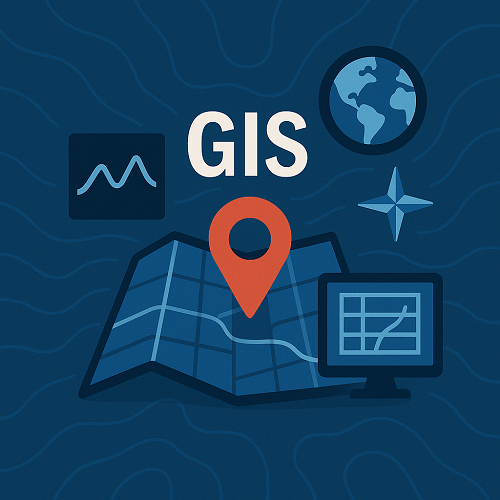TL;DR
- GIS in 2025 is driving safer, smarter urban planning and infrastructure monitoring.
- Esri and its partners introduce new tools for environmental review and city-scale analysis.
- Collaborative GIS platforms now connect multiple stakeholders in large infrastructure projects.
- Emerging trends include AI-assisted spatial analytics and real-time data integration.
- Organizations using updated GIS frameworks report higher operational efficiency and cost savings.
What’s New Right Now
Geospatial Information Systems (GIS) are experiencing rapid transformation in 2025. Recent developments from Esri and allied partners highlight new geospatial tools that enhance city insight, environmental compliance, and infrastructure resilience. These updates support safer construction workflows and streamlined collaboration among architects, engineers, and urban planners (source).
Additionally, the integration of advanced sensors, AI-driven spatial analysis, and cloud-based GIS platforms is improving environmental review processes and supporting workflow automation across industries. As a result, decision-makers are gaining faster access to accurate spatial intelligence for complex, large-scale projects.
Why It Matters
For businesses, these GIS advancements mean faster project approvals, better compliance reporting, and reduced rework caused by incomplete spatial data. Technical teams benefit from cloud collaboration and advanced visualizations that minimize data silos and prevent misinterpretation of terrain, zoning, and environmental factors. Collectively, GIS innovation improves efficiency, sustainability, and safety across urban ecosystems.
How GIS Is Transforming Infrastructure and Environmental Management
GIS technologies in 2025 are no longer just about map visualization—they form the backbone of integrated decision support systems. Cloud-based platforms allow real-time visibility into asset locations, while AI-enhanced spatial models uncover patterns in traffic, pollution, and climate data. Construction firms now integrate GIS directly with Building Information Modeling (BIM) to coordinate utilities and safety zones with precision.
Key Technology Trends
- AI-Augmented Spatial Analytics: Predictive modeling identifies potential risks before projects begin.
- 3D Urban Dashboards: Provide stakeholders with immersive spatial simulations for planning and risk assessment.
- Cloud and Edge Integration: Delivers rapid data synchronization between field teams and back-end systems.
- Cross-sector Collaboration: Multidisciplinary project teams share real-time geospatial updates in secure cloud environments.
Comparison of Emerging GIS Approaches
| Approach | Core Advantage | Typical Use Case | Implementation Complexity |
|---|---|---|---|
| Traditional Desktop GIS | Offline data processing, controlled workflows | Small municipal mapping | Low |
| Cloud-Based GIS | Real-time collaboration, remote access | Large infrastructure projects | Medium |
| AI-Enabled GIS | Predictive insights, automated detection | Disaster risk analysis | High |
| Integrated BIM-GIS | Design and spatial coordination | Urban development and infrastructure | Medium |
Mini Case Study: Smart Infrastructure Coordination
Problem: A metropolitan infrastructure agency struggled to coordinate underground utilities across multiple contractors, leading to costly rework and safety hazards.
Approach: The agency implemented a cloud-based GIS integrated with BIM data and real-time asset tracking. Stakeholders used centralized dashboards to visualize infrastructure layers and schedule construction safely.
Outcome: Within one year, the agency reduced rework incidents by 35%, improved response times to field hazards by 50%, and achieved full compliance with updated urban planning regulations.
Implementation Checklist
- Assess current data maturity: Identify coverage gaps and integration pain points.
- Select a scalable platform: Choose a solution supporting cloud collaboration and secure APIs.
- Incorporate AI and automation modules: Prioritize workflows that benefit from predictive insights.
- Develop data governance policies: Establish consistent metadata and access controls.
- Train multidisciplinary teams: Build in-house proficiency across GIS, BIM, and IoT domains.
- Monitor and iterate: Use KPIs like asset accuracy, downtime reduction, and compliance success to guide improvements.
FAQs
1. What industries benefit most from current GIS innovations?
Construction, urban planning, energy, and environmental monitoring sectors are leading adopters, thanks to the synergy of IoT, sensors, and spatial analysis.
2. How does AI enhance GIS operations?
AI algorithms process satellite imagery and field data to detect anomalies, forecast risks, and optimize route planning or resource allocation faster than manual review.
3. Is cloud-based GIS secure?
Yes, when configured with role-based authentication, encryption, and compliance monitoring, cloud GIS can be more secure than isolated desktop installations.
4. How are BIM and GIS integrated?
Digital twins combining BIM models with GIS layers allow teams to visualize assets in geographic context, improving planning accuracy and interagency coordination.
5. What ROI can organizations expect?
Typical ROI includes 20–40% efficiency gains in planning and maintenance, reduced inspection costs, and enhanced data reliability for forecasting.
6. What’s next for 2026 and beyond?
Expect continual convergence between GIS, AI, and automation, enabling autonomous monitoring and decision support systems across smart cities.
Conclusion
As 2025 unfolds, GIS remains central to designing safer and smarter infrastructure. Forward-thinking organizations that embrace AI-enhanced, cloud-based GIS frameworks unlock actionable spatial intelligence and measurable ROI. To learn how to accelerate your spatial transformation, explore our GIS services today.
